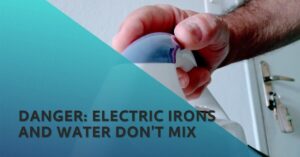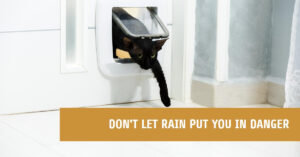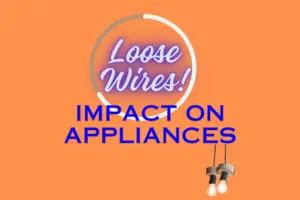Power strips are a common sight in households and offices, providing a convenient way to connect multiple electronic devices to a single power source.
However, it is essential to understand the potential risks and safety precautions associated with power strips. One such concern is what happens if water is accidentally spilled on a power strip.
Spilling water on a power strip can lead to short circuits, electrical shocks, and fire hazards.
This article aims to explore the consequences of water spills on power strips and provide guidance on how to handle such situations.
The Risk of Water Spills
Water is a conductor of electricity, and when it comes into contact with a power strip, it can pose significant hazards.
The presence of water increases the likelihood of short circuits, electrical shocks, and even fire hazards. Understanding these risks is crucial for maintaining personal safety and protecting the connected devices.
Immediate Actions to Take
If water is spilled on a power strip, it is essential to prioritize personal safety above all else. Taking immediate action can help mitigate the risks. Here are the steps to follow:
- Powering off the affected strip: Locate the power switch on the power strip and turn it off to prevent electricity from flowing through the wet components.
- Unplugging devices from the strip: Disconnect all devices from the power strip to avoid potential electrical shocks or damage to the equipment.
- Drying the area thoroughly: Use a dry cloth or towel to absorb as much water as possible from the power strip and the surrounding area. Ensure the area is completely dry before proceeding.
- Inspecting for damage: Carefully examine the power strip for any visible signs of damage, such as corrosion, rust, burn marks, or discoloration. These signs may indicate internal damage or compromised safety.
- Seeking professional help, if necessary: If you suspect that the power strip has been significantly affected or if you are unsure about its safety, it is advisable to seek assistance from a qualified electrician.
Assessing Damage and Potential Risks
After the initial response, it is crucial to assess the extent of damage and potential risks associated with the water spill. Look for the following signs to evaluate the situation:
- Corrosion or rust: Water can cause metal components to corrode or rust, compromising the structural integrity and electrical conductivity of the power strip.
- Burn marks or discoloration: These signs may indicate that a short circuit occurred, potentially leading to damage to the power strip or connected devices.
- Unusual odors: Foul or burning smells can suggest internal damage or electrical issues.
Power Strip Safety Precautions
To minimize the risks associated with power strips and water spills, it is important to follow safety precautions even before an accident occurs. Consider the following measures:
A. Choosing the right power strip: Opt for power strips that have built-in safety features like surge protection, overload protection, and childproof outlets.
B. Placement considerations: Place the power strip in an easily accessible location, away from potential water sources such as sinks, water pipes, or windows.
C. Regular maintenance and inspection: Periodically inspect the power strip for any signs of wear, damage, or loose connections. Clean the power strip to remove dust or debris that can increase the risk of overheating.
D. Using water-resistant or surge-protected power strips: Consider using power strips with water-resistant properties or those specifically designed for damp environments, such as kitchens or bathrooms. Surge protection can also provide an additional layer of safety.
Read also my article: Maximizing Convenience: Can You Run an Electric Kettle on a Power Strip?
Prevention and Precautionary Measures
Prevention is always better than dealing with the aftermath of accidents. Here are some preventive measures to consider:
A. Creating a spill-proof environment: Be cautious when using liquids near power strips. Avoid placing beverages or water containers in close proximity to the power strip to minimize the chances of accidental spills.
B. Using drip trays or water-resistant mats: Place a drip tray or a water-resistant mat underneath the power strip as an added layer of protection against spills.
C. Elevating power strips from the ground: Keep the power strip elevated or mounted on a wall to reduce the risk of direct contact with water on the floor.
D. Utilizing power strip covers or enclosures: Consider using covers or enclosures designed to protect power strips from accidental spills or other potential hazards.
Potential Consequences and Risks
Failing to address water spills on power strips promptly can lead to various consequences and risks:
A. Electrical hazards: Water can cause electrical currents to travel unpredictably, leading to electrical shocks, equipment damage, or even personal injury.
B. Damage to connected devices: Water spills can potentially damage the power strip’s internal components and consequently harm the devices connected to it.
C. Fire hazards and potential property damage: Water contacting electrical components can create short circuits, increasing the risk of fire and property damage.
Conclusion
Understanding the potential risks and consequences of water spills on power strips is vital for maintaining personal safety and protecting valuable electronic devices.
By following immediate actions, assessing damage, practicing safety precautions, and taking preventive measures, one can significantly reduce the likelihood of accidents and mitigate potential hazards.
Remember to always prioritize safety and seek professional assistance when necessary to ensure the well-being of yourself, others, and your electrical devices


